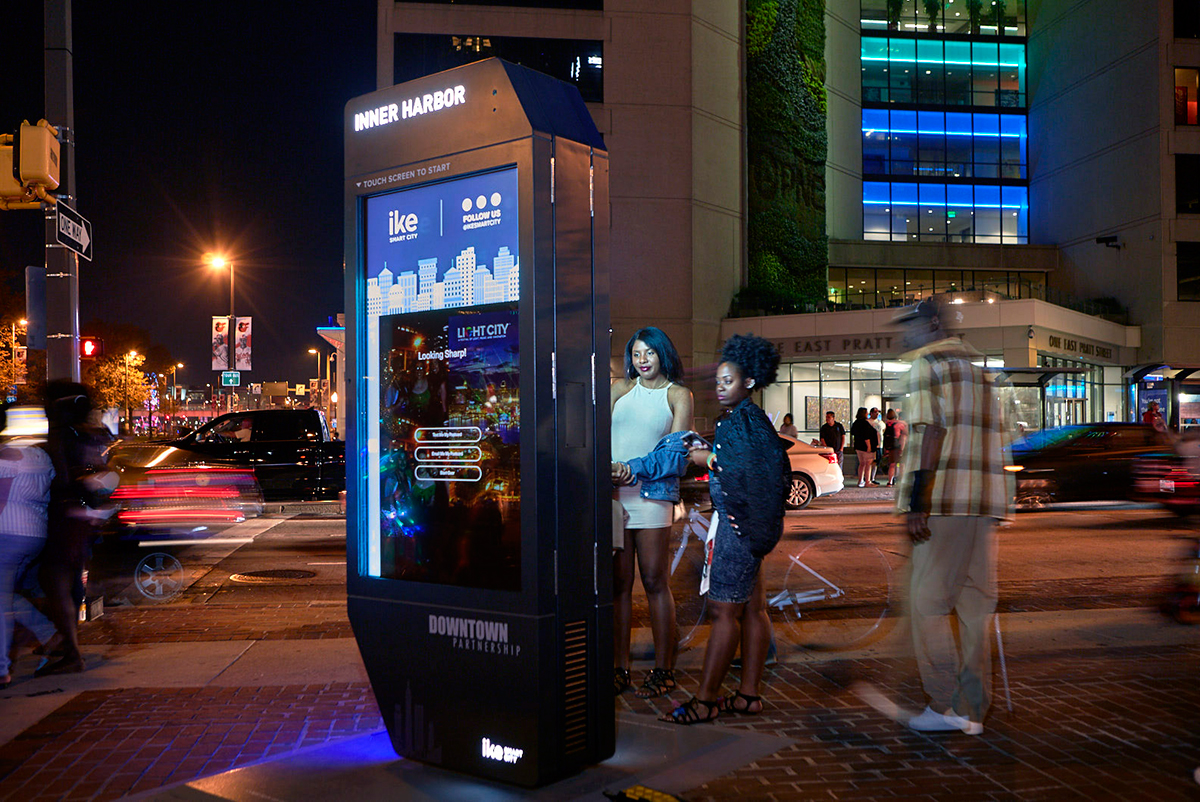Innovation in Mid-sized Cities
May 7, 2018 — The Big Picture
Our Chairman John Rossant sits down with Pete Scantland, CEO of Columbus-based IKE Smart City, to discuss the evolving role of private enterprises within cities, and how mid-sized cities in the United States are quickly catching up to their larger counterparts.
John Rossant: Hi Pete. Before we dive into some challenges and opportunities for mid-sized cities, how did you find inspiration for the IKE Smart City digital kiosk?
Pete Scantland: I grew up in Columbus, Ohio and I graduated college in 2001. Like a lot of cities at that time, Columbus was experiencing a rebirth of its downtown area. The city passed a series of strategies that would boost its re-urbanization, and one of those was creating a one-stop shop for project development. Through this process, I worked with the city to create new signage regulation that allowed for more interactive urban media, in other words non-traditional signage that was built into buildings themselves. So that was the basis for Orange Barrel Media, which is the parent of IKE Smart City.
At the time, cities were interested in enlivening and adding a sense of vibrancy to create a 24-hour district. Also, for many of these projects, the income from the signage was a key contributor to allowing developers to make these projects work economically; the more these buildings could generate in revenue, the less the city needed to subsidize them. In addition to the creativity of our signage, our real innovation in outdoor media was that we had a new business model where the public actually participated in the economic result, through revenue sharing and other partnerships. We started working with other cities, investing and continuing to expand the business from there. Today, we’re in 15 cities with that business, and we add one or two new ones every year.
Working across the United States, we started hearing from cities who wanted us to create a platform at street level that was really about navigation and wayfinding, and that provided a connection between the city and its citizens. That’s IKE. We launched it in Denver, Colorado and are now working to expand it nationwide. We’ve invested heavily in building a platform that greatly advances social equity, delivering a wide range of services. We want to deliver value for everyone across the economic spectrum, whether that person is interested in great art events, a local’s choice for sushi, or finding a job or shelter. Our heritage as a media company is what brought us here, but our company today is vertically integrated, with a team of world class developers building a truly immersive and interactive experience for pedestrians. We deliver the platform in a package that brings together the software, the hardware and the business model, all under one roof, and at no cost to the city.
JR: We sense that cities around the world are becoming more entrepreneurial. Your model, for example, has a revenue split between your company and the city. We find that more cities are looking more closely at public-private partnerships of this kind – and others. There is definitely more engagement between these two sectors. I imagine this is a behavioral change you are also coming across?
PS: Absolutely. In the past, cities used to procure something like a physical object that they bought once and moved on. Now, they need to procure a service. Bike-share is a great example. The city can’t just buy bikes and throw them out onto the street: it’s about the service of maintaining it, rebalancing it and of continuing to invest in the physical object itself. What they are actually doing is entering a long-term partnership with a company. I think cities are much more interested in understanding how to find partnerships where the city’s and the company’s success are mutually intertwined.
JR: At NewCities, some of our programs focus on innovations in financing urban infrastructure – we’ve noticed that some smaller municipalities do not have the needed level of financial literacy. Do you feel that city administrators or chief technology information officers from mid-sized cities “get it” in the same way that their counterparts in Chicago or LA understand the stakes?
PS: I don’t think that the largest cities necessarily have a stronghold on the smartest people, or are necessarily the best run cities. There are legacy systems in larger cities that make it much harder to innovate when there’s already so much groundwork that has been laid. The world is just so much more competitive now than it ever has been. Today, people are more mobile than ever, businesses can be moved from one location to another much more readily… the stakes are so much higher. Every city, especially smaller cities that don’t inherit a massive population, are realizing that they need to create the kind of place that is attractive to the next generation of people to come, live and build businesses. I’m seeing tremendous innovation, passion, and great ideas in many smaller cities across the country.
JR: There are two contrasting points of view on this. One is that there are these amazing points of life across the United States, where there is real innovation and people thinking outside the box. Yet there’s another narrative that the big coastal mega-cities like New York City, Los Angeles, San Francisco or Miami are sucking the talent from everywhere and impoverishing the smaller, medium-sized cities across the country. Which way you see that dichotomy?
PS: Certainly no one could argue that places like Los Angeles, New York City and Chicago aren’t tremendously competitive and incredible forces of innovation and economic progress. But when you look at the numbers in terms of which cities are growing the fastest, it’s actually not the largest cities. The fastest growth tends to take place in mid-sized cities such as Atlanta, Charlotte, Austin, and San Antonio. I see an equally bright future in mid-sized cities.
